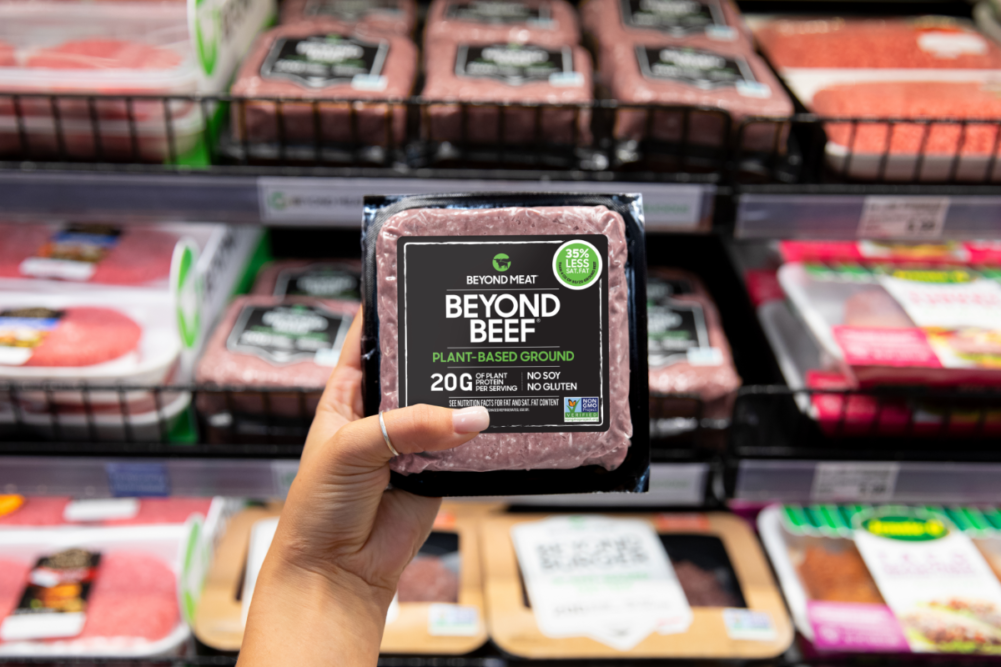EL SEGUNDO, CALIF. – The transition from startup to a manufacturer with scale can be challenging. Beyond Meat Inc.’s second-quarter performance demonstrates how to adapt to unforeseen circumstances and continue to add scale.
Prior to the pandemic, the company’s split between retail and foodservice was approximately 50:50. By the end of the second quarter it was 88% retail and 12% foodservice.
“Adapting to such a dramatic change in mix over a short period of time was no small feat,” said Ethan Brown, founder, president and chief executive officer, during an Aug. 4 conference call to discuss quarterly results. “Led by the shift in consumer behavior toward retail, the team repurposed assets and repacked and rerouted inventory to this sector. As a result, we were able to demonstrate extraordinary year-over-year gains even as foodservice demand rapidly deteriorated.”
Sales in the United States and around the world rose 192% year-over-year driven by growth in total distribution points, higher sales velocities at existing customers and new product introductions, according to the company. Today, Beyond Meat’s products are available in approximately 112,000 retail and foodservice outlets globally, up 18,000 since the end of March.
For the 12-week period ended June 14, sales of Beyond Meat products were up 121% year-over-year with velocity growth of 88%, according to SPINS data for total US multi-outlet, natural and specialty channels. Household penetration in the United States increased to 4.9% as of June 2020, more than double from 2% in June 2019.
“This increase in household penetration has occurred in conjunction with extremely favorable trends: a 36% increase in buyer rates, a 23% increase in purchase frequency, a strong increase in repeat rates from approximately 45% in January to nearly 50% in June,” Brown said. “This repeat rate should be compared to what generally constitutes success in the retail CPG (consumer packaged goods) sector, which is typically anywhere from 30% to 40%.”
But Beyond Meat’s retail gains during the quarter came at a loss for its foodservice business, which saw business decrease 59% year-over-year.
“We see no fundamental issues related to our foodservice business itself or our strategy that would preclude us from returning to a strong growth trajectory when some level of normalcy returns,” Brown said. “For the remainder of the year, however, we do anticipate that US foodservice demand will remain soft relative to a year ago given the return of high rates of COVID-19 infections across many parts of our country, including here in Los Angeles.”
For the quarter ended June 27, the company incurred a loss of $10 million, slightly more than the $9 million loss recorded during the same period of the previous year.
Sales for the quarter rose to $113 million from $67 million in 2019.
Factors contributing to the loss included $7.5 million in costs attributed to COVID-19, specifically approximately $6 million to repackage products intended for foodservice for retail and $1.6 million in product donation costs.
“We continued to invest in strategic initiatives to support our long-term growth even as we made short-term tactical adjustments in response to COVID-19,” said Mark J. Nelson, chief financial officer and treasurer. “These long-term initiatives included investments in our international expansion efforts as well as new hires to enhance our capabilities in key areas. And this spending represented roughly a 3¢ per share sequential reduction in EPS in the second quarter of 2020.”
The company did not offer guidance for the rest of the year.
“Given the ongoing uncertainty regarding the ultimate duration, magnitude and effects of the COVID-19 pandemic on our business and those of our customers, our 2020 guidance remains suspended,” Nelson said. “We will periodically reevaluate our ability to provide clearer visibility into our near-term outlook. However, at this time, we do expect COVID-19 to continue to impact our business operating environment at least through the balance of the year.”
For the first six months of fiscal 2020, Beyond Meat recorded a loss of $6 million, down from a loss of $16 million the year prior.
Sales rose sharply to $210 million from $108 million during the first half of fiscal 2019.


